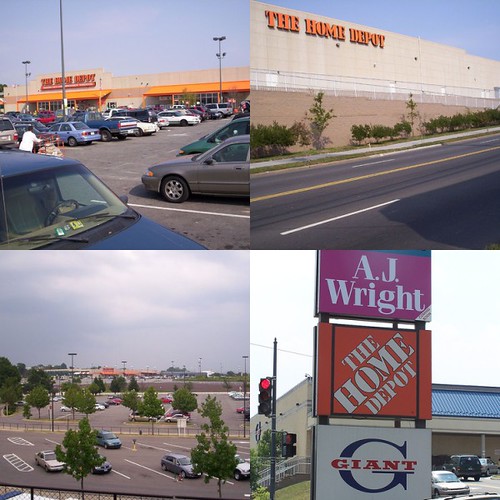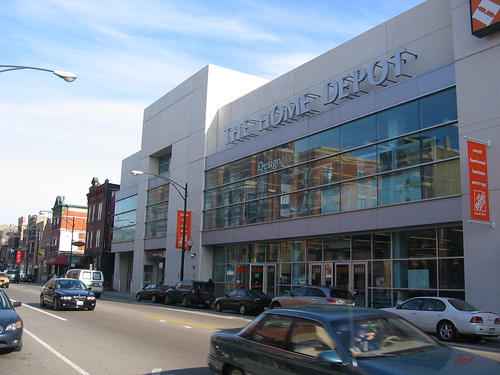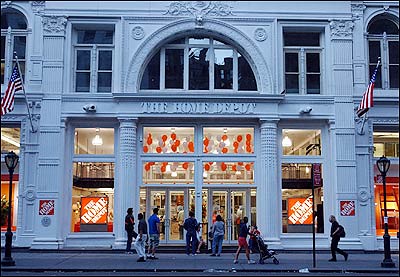Walmart's entry into DC as a textbook example of how key issues get overlooked when you focus on the wrong things
strat·a·gem (strătˈə-jəm)
noun- A military maneuver designed to deceive or surprise an enemy.
- A clever, often underhanded scheme for achieving an objective.
Permitted use: means a use defined by a Land Development Code (zoning/building regulations), listed as a permitted use in the use regulations for a particular district, and authorized as a matter of right when conducted in accordance with the requirements of the Code.
-- Summary of DC Zoning Districts and permitted uses
It might be a welcome advance for shopping and jobs, but does this advance have to come at the failure to extend and strengthen urbanism?
And Harriet Tregoning, DC's planning director, ought to be acknowledging this as a potential problem, at least because it's her job, even if we can understand that Robert McCartney isn't expected to know squat about urban design (but he ought to, if he is going to write about DC once or twice weekly as one the Post's two main columnists covering city issues). See "Walmart: “They're Bringing Groceries"" also from the City Paper.
For two of the four sites, the plans are failures. I'm not sure about what will happen for the Ward 7 site--because it will be part of a planned unit development process, maybe the developer will be motivated to do other things. Only the Ward 6 project, where the Walmart will be part of a mixed use decidedly urban development, can the integration of a Walmart store into the City of Washington be termed pro-urban.
But as McCartney writes:
D.C. Office of Planning Director Harriet Tregoning, who will oversee a city review of two of the Wal-Mart sites, said the chain's arrival would be an advance in the city's long-term effort to increase shopping choices and keep sales tax dollars from "leaking" to the suburbs.
"We've had a big push to bring more retail to our city where people want to shop," Tregoning said. "We think it's great that a lot of types of retail that had previously ignored the District, and other cities, are now discovering our healthy, urban markets."
When city leaders are talking that way, it's easy to understand why opposition to Wal-Mart seems so weak. The anti-Wal-Mart rally Monday drew only about 70 people, of whom about 20 were covering the event for local media.
When you don't focus on "the real issues," of course the real issues get ignored.
That's all part of the calculus of how Walmart chose the sites, the developers to work with, and how they built support for their entry, based on the mantra of jobs and tax revenues, and with an advance phalanx of contributions to organizations on a variety of projects, including technical assistance for small businesses in Ward 5, which is why Councilmember Thomas is supportive ("New D.C. economic chairman supports Ward 5 Wal-Mart" from the Post).
As Robert McCartney writes:
Planning director Tregoning said she was "very supportive" of asking Wal-Mart to sign such an agreement but noted that her office's leverage with Wal-Mart is currently "very limited." That's because Wal-Mart is not asking for tax incentives or other public subsidies that would require D.C. Council approval.
When your only "power" is to persuade, when you don't have one consistent message, and when you don't bring up some of the key issues that really matter, it's very difficult to accomplish anything.
Labels: land use planning, protest and advocacy, sustainable land use and resource planning






0 Comments:
Post a Comment
<< Home